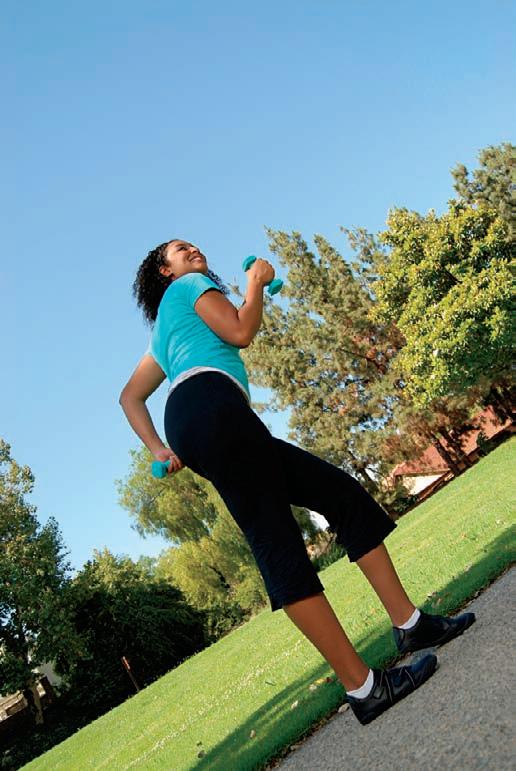
2 minute read
fitness
Are you using injury as a crutch to avoid exercise?
Workouts: The Painful Truth Should you rest a sore ankle, or can you keep training through a minor injury?
Advertisement
“Rest doesn’t mean inactivity,” says Aaron Gewant, a physical therapist at New Jersey’s Kessler Institute for Rehabilitation.
First, take care of your injury, Gewant suggests. Follow the RICE method (rest, ice, compression and elevation) until swelling disappears and pain dissipates.
Once these signs of injury abate, measure your pain. On a scale of zero to 10, with zero equaling no pain and 10 signaling you need to go to the emergency room, your pain should never be above a four, Gewant says. If it is, see a doctor. If it isn’t, it’s time to revise your fitness program and resume exercising.
If you’ve hurt your lower body (knees, joints, ankles), concentrate on lowimpact workouts, such as cycling on a stationary bike or rowing on a machine.
If you’ve hurt your upper body (arms), start by mimicking the exercise movement without resistance. If you can move (even with a little bit of tenderness), add 2- to 3-pound weights.
Once you’re able to complete three sets of 10 repetitions without the slightest twinge, ease into your normal workouts. —Cristina González
WALK THIS WAY
Let’s be real. A strenuous gym workout isn’t for everyone.
But did you know that a walking workout can still get your heart pumping and muscles working?
Walking workouts provide a ton of benefits. They improve overall fitness, decrease cardiovascular risk of disease and boost bone density and mental health, says Julie Bishop, MD, assistant professor of orthopaedics surgery at The Ohio State University in Columbus.
To cash in on all these benefits, you should walk 20 to 60 minutes, three to five days each week, Bishop says. And it’s easy to get started. Simply buy a pair of walking shoes (replace them every six months), choose a route, decide on distance and intensity and head outside.
Before you get to stepping, though, warm up with a three- to five-minute stretch. End your walk with another round of stretches. And follow the “rule of 10s,” Bishop says. Pick one of three areas (distance, intensity and duration) and increase it by 10 percent each week.
If you don’t have time to commit to a longer walk right now, increase your intensity to still get great benefits. When time permits, build up to longer walks.
But what’s most important, Bishop says, is to have fun walking! —CG

Number of people who visit the emergency room each year because of a recreational sports or fitness injury.
Source: The Centers for Disease Control and Prevention (CDC)










